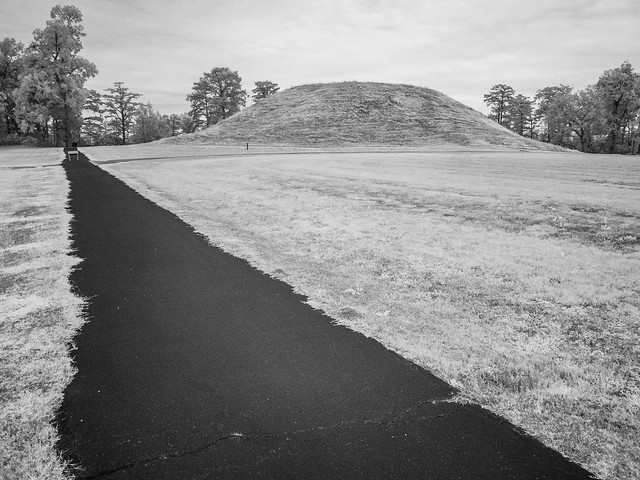The Plum Bayou people built mounds in other areas, but the ones contained in what is now the Plum Bayou Mounds Archeological State Park were the largest. According to the Encyclopedia of Arkansas, "Eighteen mounds were arranged around two rectangular open spaces that were used for ceremonies. Today, one mound is forty-nine feet high, another is thirty-nine feet high, while a third is thirteen and one-half feet high; the original heights are unknown. All others are less than four feet high. Only one mound has been identified as a burial mound. Some were used as platforms for ceremonies, while others had residences of religious leaders on them. Excavations in five mounds have uncovered evidence that they were originally low flat-topped platforms constructed with soil. Several mounds were positioned to line up with the sun on the horizon at sunrise and sunset on the equinoxes and solstices. The position of the sun on the solstices established times that were important in the annual cycle of activities, both for farming and for rituals. A standardized unit of measurement, 155.8 feet, was also important in the placement of mounds, so that the site layout was planned."
It's not known why the site was abandoned after the 12th century. A few hundred years later, the mounds would be discovered and they were studied. But they weren't preserved, the lands were privately owned and farmed. Many of the mounds were plowed under and destroyed. The state of Arkansas bought the land in 1975, and it was later named a National Historic Landmark in 1978.
This is a view of Mound A, which is the largest in the park (and the largest prehistoric Native American mound in the state). It stands at 49 feet tall, and it's believed that a building used to sit on top of the mound that served as either a place to live or for conducting ceremonies.



No comments:
Post a Comment